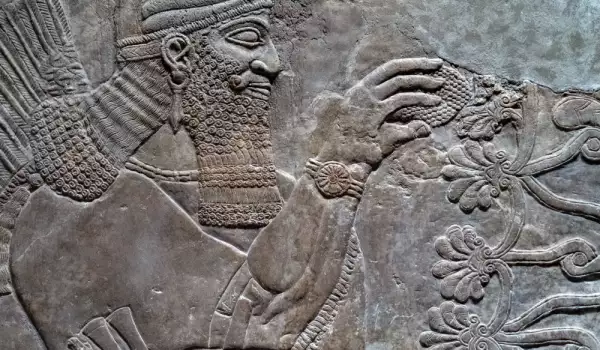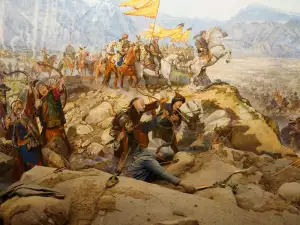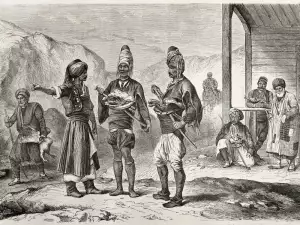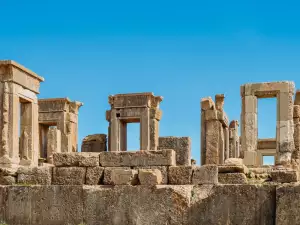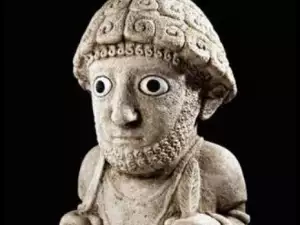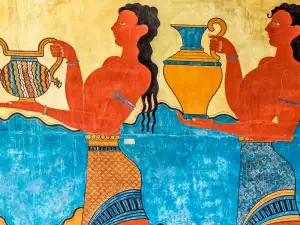It is difficult to imagine today, if one follows the international news, that the cradle of human civilization was located on the territories of today's troubled Iraq. There, 12000 BC, during the Neolithic period, between the Tigris River and the Euphrates River, the first civilization appeared - the Mesopotamian one.
It is considered one of the sciences, although it is a collection of a number of smaller ones - Sumerian, Akkadian, Assyrian, Babylonian and others. They gave the world inventions that contributed to the development of the human race and culture.
To ancient Mesopotamia we owe the invention of cultivated agriculture, the wheel, the calendar, numbers, the alphabet and much more.
The main reason for the emergence of the ancient civilization were the rivers around which it developed. Regular river floods made the soil fertile and irrigation of crops was easy. The abundance of food contributed to a greater crowding of people and more specialized societies were created this way.
The first people to create their civilization in Mesopotamia were the Sumerians. The Sumerian civilization was formed in the southern part of the area around 4000 BC, i.e. 6000 years ago. The Sumerians created many city-states along the Tigris and Euphrates and the most famous were Ur, Uruk, Kish, Mari.
The Sumerians created the first alphabet - the cuneiform alphabet, which was adopted by many ancient people. It represented small cuneiform characters written on clay tablets, which were subsequently baked.
The first great work in human history was written in this alphabet - The Epic of Gilgamesh. The Sumerians used the cuneiform script to record sales and purchases, write letters to each other and tell stories. The incredibly important invention of the wheel is also attributed to the Sumerians; the earliest wheels found date back to 3500 BC in ancient Mesopotamia.
The Sumerians built ships that allowed them to travel in the Persian Gulf and trade with other early civilizations such as the Harappans in northern India. They traded textiles, leather goods and jewelery for Harappan semi-precious stones, copper, pearls and ivory.
Sumerian religion was polytheistic - worshiping multiple gods, many of them anthropomorphic. The temples of these gods were massive ziggurats (temples with a pyramidal structure) located in the centers of most cities.
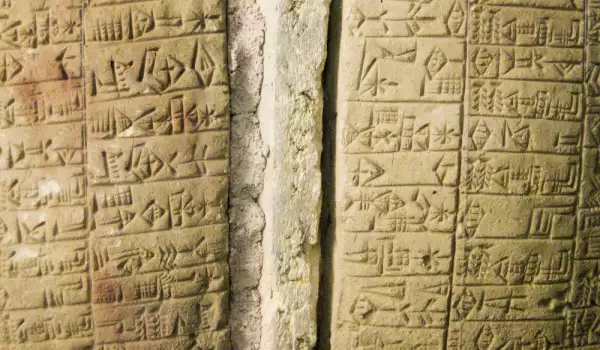
Although they considered themselves a single civilization, the Sumerians were never able to unite into a single state. Some of the cities, such as Ur and Uruk, managed at some point to unite a large part of the lands of ancient Mesopotamia, but never all of it. In 1750 BC the Elamites, living in the lands of present-day Iran, conquered the city of Ur. This is also considered the end of the Sumerian civilization.
The unification of the interlude achieved the second great civilization that appeared in the region - the Acadian.
Around 3000 BC, the Sumerians had significant trade and cultural exchange with a people who settled in northern Mesopotamia, the Akkadians, named after the city-state of Akkad.The Akkadian language is related to the modern languages Hebrew and Arabic. These languages are known as Semitic languages. The term Semitic has a biblical character. It comes from Shem, son of Noah, the alleged ancestor of Abraham and the Jewish and Arab people respectively.
Around 2334 BC, Sargon, considered by many to be the first emperor, ascended the throne of Akkad. He also created the world's first dynastic empire - the Akkadian. Within a few decades he conquered all the city-states in Mesopotamia. His dominions extended even beyond the borders of the Mesopotamia, as he also captured large parts of today's Syria and Lebanon.
Under Sargon, trade outside the borders of Mesopotamia increased and architecture became more sophisticated and massive. The Akkadian Empire collapsed in 2154 BC, about 180 years after its founding. New tribes appeared along the banks of the Tigris and Euphrates, opening a new page in the development of Mesopotamia.
After a long period of constant warfare, the Babylonians appeared on the historical map. Babylon was a small city-state in central Mesopotamia for a century after it was founded in 1894 BC. Things changed with the reign of King Hammurabi, from 1792 to 1750 BC. He was an efficient ruler who created a centralized bureaucracy with taxation. Hammurabi freed Babylon from foreign control and then conquered all of southern Mesopotamia, bringing stability and imposing the Babylonian name on the region.
One of the most important achievements of this first Babylonian dynasty was the code of laws called the Code of Hammurabi, which enriched and improved the earlier written laws of Sumer and Akkad. Like the codes of the Sumerian king Ur-Nammu of Ur, written in 2100 B.C. BC to 2050 BC, the Code of Hammurabi is one of the oldest deciphered writings of considerable length in the world.
Written around 1754 BC by the sixth Babylonian king Hammurabi, the Codex was written on clay slab. The code consists of 282 laws with severe penalties depending on social status. For example, if a person of the noble class broke the arm of a slave, they had to pay a fine, while if a nobleman broke the arm of another, they had to break the offender's arm. Some see the Code as an early form of constitutional government. It contained the presumption of innocence and the ability to present evidence.
The Babylonian Empire established by Hammurabi existed for about 260 years until Babylon was conquered by invaders in 1531 BC. First came the Kassites, then came the Hittites and finally the Assyrians.
Between 626 BC and 539 BC, Babylon once again established itself over Mesopotamia. Then arose the Neo-Babylonian Empire, whose borders extended not only to the region between the Tigris and the Euphrates, but also over the whole of Syria and Palestine.
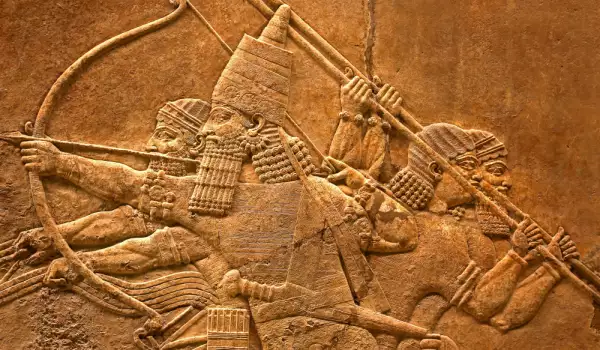
One of the greatest rulers of this new empire was Nebuchadnezzar. In his time, the fame of the city spread from India to Italy. At that time the infamous blue gates of Ishtar were built, which have survived to this day, the city walls, as well as one of the seven wonders of the ancient world – the Hanging Gardens of Babylon. In his time, women and men had equal rights, a right introduced to the rest of the world more than 2, 500 years later, or in the 20th century AD.
This new empire was conquered in 539 BC. by the Persians, and thus the greatness of the great city declined.
The first world superpower also emerged in ancient Mesopotamia. It was the Assyrian Empire. Assyria was named after its original capital, the ancient city of Ashur in northern Mesopotamia. Ashur was originally one of the many Akkadian-speaking city-states ruled by Sargon and his descendants during the Akkadian Empire. Within a few hundred years of the collapse of the Akkadian Empire, Assyria became a major power in the region.
For 1, 400 years, until the end of the 7th century BC, the Akkadian-speaking Assyrians were the dominant power in Mesopotamia, especially in the north. The empire reached its peak near the end of this period in the seventh century BC. At that time, the Assyrian Empire stretched from Egypt and Cyprus in the west to the borders of Persia (modern Iran) in the east.
The Assyrians were known for their cruelty to defeated enemies and to those who rebelled against their rule. They were responsible for the disappearance of many of the great cities of the past. Nevertheless, the Assyrians contributed to the development of warfare, culture and writing.
Despite ruling Mesopotamia for centuries, the Assyrian Empire collapsed within a decade to the armies of the Neo-Babylonian Empire and Medes.
The end of ancient civilizations is believed to have come with the rise of the Persian Empire and the fall of Babylon. When the Persian emperor Cyrus II attacked the Babylonian king Nabonidus with his troops, the latter was so hated by his subjects that they did not rise up to defend themselves against the invaders.
During Persian rule, Mesopotamian civilizations declined. Cuneiform and other cultural hallmarks were displaced and gradually died out.
By the time Alexander the Great conquered the Persian Empire in 331 BC, most of the great cities of Mesopotamia no longer existed and their culture was long forgotten. The region was eventually conquered by the Romans in 116 and finally by the Arab Muslims in 651.
